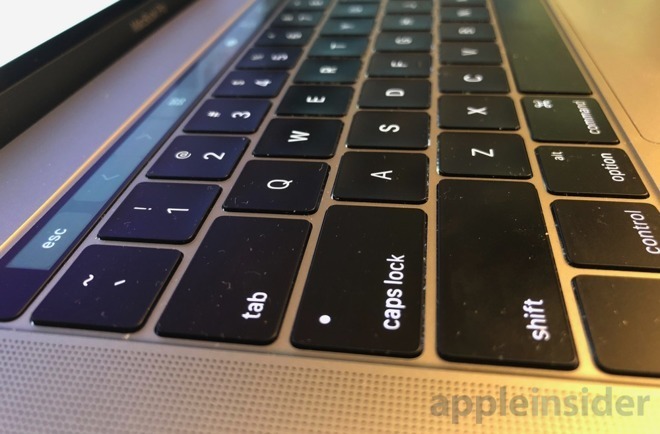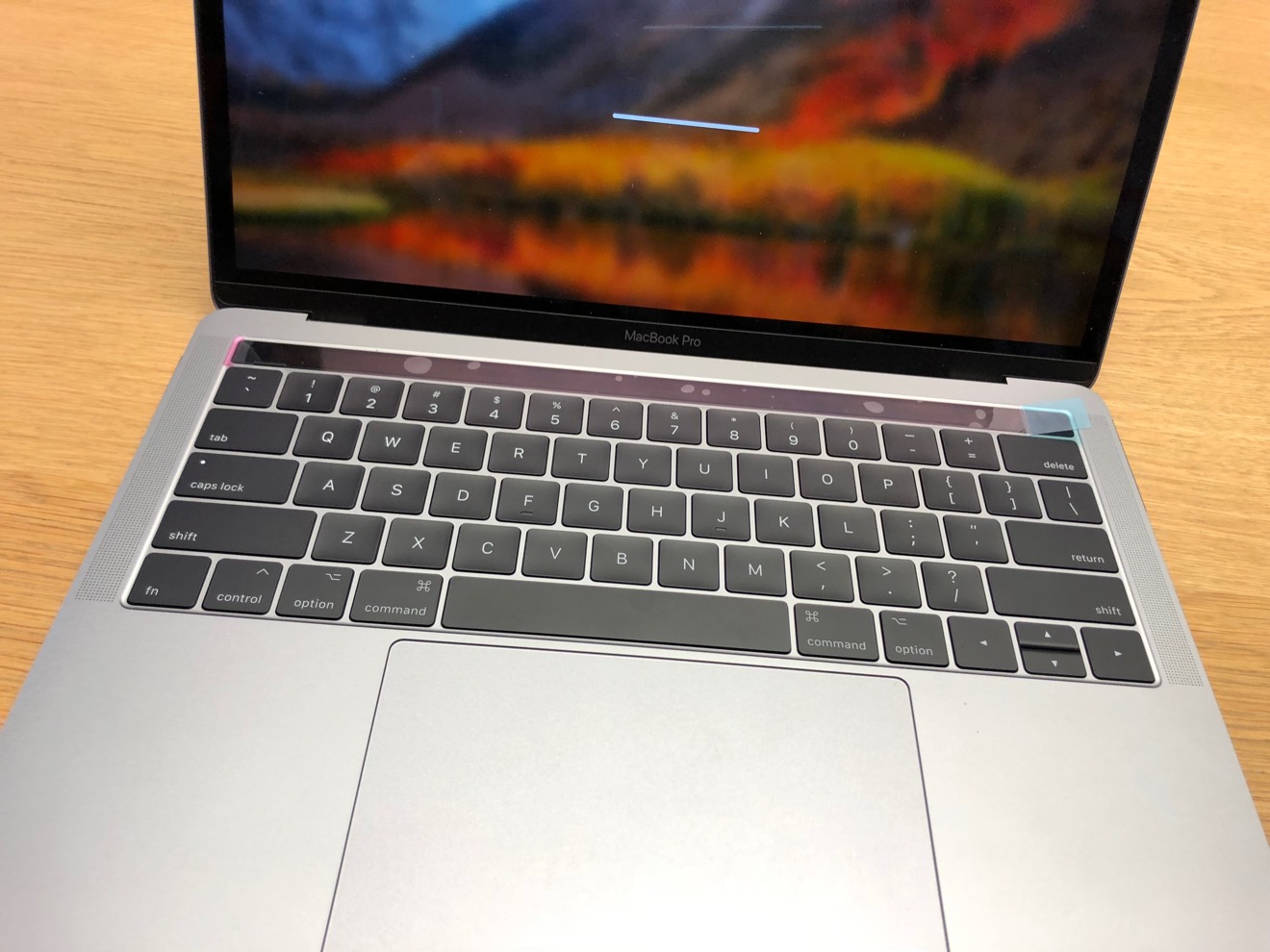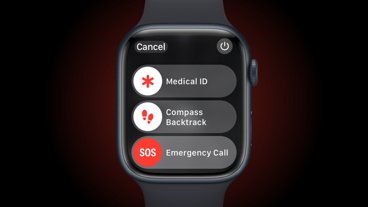While repair data collated by AppleInsider continues to suggest that Apple has made some reliability improvements in the MacBook Pro keyboard in the past year, there appears to be no changes made to the third generation butterfly switch keyboard beyond a quieter typing experience — but there should have been.
First, lets talk about the data. We've done this once before, but let's recap the findings from April, and update the numbers with a full year of data from the 2017 MacBook Pro
All data has been collected from a series of Apple Genius Bars in the U.S. that we have been working with for several years, as well as Apple-authorized third-party repair shops.
The 2014 MacBook Pro model year saw 2120 service events in the first year, with 118 related to keyboard issues necessitating an upper case replacement — 5.6 percent of all MacBook Pros serviced in the first year. The 2015 has 1904 service tickets, with 114 relating to the keyboard, making 6.0 percent.
The two numbers are very similar, which is to be expected. The keyboards were essentially unchanged since the 2012 Retina MacBook Pro, and should have failure rates similar to each other.
Apple released the new keyboard with the MacBook, and moved the design to the 2016 MacBook Pro. In the first year of the 2016 MacBook Pro, our data gathered 1402 warranty events, with 165 related to only the keyboard and not including the Touch Bar — 11.8 percent.
As we mentioned, we now have a full year of data. Since the MacBook Pro release in June 2017, our data set has grown to 1369 captured service events in the first year of availability with 112 related to keyboard issues also not including any Touch Bar issues, very slightly growing the share to 8.2 percent.
Failure rates over time across all four models are relatively static, with no appreciable increase or decrease in events reported at any time after the surveyed first year. Percentages of failures were comparable between the third-party authorized shops, and the Genius Bar data.
For the 2014 MacBook Pro, of the 118 repairs, 8 came back for a second go-around on the repair within 90 days. With the 2015, 6 did. None came back for a third time.
Regarding the 2016 MacBook Pro, of the 165 keyboard repairs, 51 came back again once, and of those 51, 10 more came back for a third time in that first year. The 2017 fared better in this regard, with 19 of the 112 coming back once, and 4 of those coming back for a third time in the same timeframe.
The effect of the repair program
We'd mentioned that there was a fairly static failure rate across the entire timespan. However, what we weren't expecting is just about the same rate of service on keyboards after the repair program was issued on June 22 — and no increase in the 2016 model's rate.
Resetting the counter to only incorporate the keyboard repair program, the percentages as a whole of the service calls are essentially unchanged — at least for now.
In the three weeks since the program was launched, there have been 83 2016 MacBook Pro service incidents captured in total, with 10 of them being keyboards — about the same as the pre-service percentage.
The 2017 model has seen 110 service events captured since the repair program launch. Of those, 7 were keyboard repairs — again, about the same as the pre-service program rate. None of the machines we've captured data on have gone back for a second repair after a repair under the new program.
In both repair pools, no machines repaired under the program have come back for service a second time. It hasn't been that long, though, so there's no real conclusion to draw from that data points as of yet.
If the repair program was causing a flood of service requests because of pent-up demand for repair, we'd have seen an uptick in both service events per month, and the keyboard repairs as a percentage of the total service calls. At present, both numbers are virtually identical.
Like we said, it has only been three weeks since the repair program launched. We acknowledge that the data set is small since the repair program, but we're continuing to keep an eye on it.
Key takeaways
Overall, the total number of service calls is lower for both the 2016 and 2017 MacBook Pro, versus the older models, even including the keyboard failures. Given that the volumes of MacBook Pros sold over the years are pretty static, this points to a more reliable computer overall — which is good considering that there are no user-replaceable parts.
Also, clearly, there is some kind of change between the keyboard originally in the 2016 MacBook Pro, and the one that is being used to repair the older machine with it standard in the 2017 MacBook Pro.
But, what those changes are, Apple isn't saying. Plus, they appear to have not made any more improvements in the 2018 MacBook Pro keyboard, given recent statements — or the lack thereof.
Wait, no further reliability improvements in the current keyboard?
The keyboard is the new machines is different. It has been re-engineered to give the users a quieter typing experience, which Apple has told us is the number one user complaint about the machine.
Apple hasn't said anything directly about keyboard reliability improvements in the third generation butterfly keyboard. When asked directly, they either verbally dance around the topic like AppleInsider's sources, politely defer saying that the issue only impacts a small percentage of users, and in rare instances say nothing has been changed.
The Verge asked directly, and was reminded that the failure rate was low. CNet was told that the keyboard contains "no new engineering or tweaks" to alter reliability.
We were told by a source within Apple corporate not authorized to speak for the company that "CNet's account is probably not right." But, we were rebuffed when we pressed for more information. Certainly, the statement is not a strong declaration that there are fixes.
Improvement in the keyboards used for repair, but still could be better
Since the MacBook Pro 2017 launched, the repair service data is very clear that the keyboards were different. They certainly are on the outside, from a marking perspective, with the symbols on the control and option keys differing from previous.
It was suggested to us that users may not know about the keyboard repair program and are either living with it, or trashing a machine because of it. Information on the program is not hard to find, and a Google search just on "MacBook Pro Keyboard" finds Apple's page on it in the first few results — so we really don't buy that argument.
To solve that particular issue, if you can even call it that, there is a fix. Apple knows who owns the machines. We'd have liked a mass-email to all of the 2016 and 2017 MacBook Pro owners telling them that the program exists.
Furthermore, with the 2018 MacBook Pro release, we'd have liked explicit confirmation that there are keyboard improvements beyond quieter typing, even if framed as a response to customer concerns. Something like "while the failures are only affecting a very small percentage of customers, we're doing the right thing and have made further enhancements" with the de rigueur marketing speak after it.
But, we didn't get that. And we probably won't.
Three months later
When we first published the numbers, there was no solution to the problem other than an expensive repair for machines out of warranty costing users right around $480 for an entire upper case assembly. Two months after our report, Apple launched the service program providing not just free repairs for it, but refunds to repairs already made. It is an adequate solution to a bad situation.
It appears that they are using improved keyboards in the program — and may have been for some time — even if that redesign is not quite up to the lower failure rate on the earlier model.
We're glad for the program, and the improved keyboards across the board that started getting used at some point for the repairs. But, we're still not happy that it is a problem at all.
Some of this issue is a perception one, exacerbated by the Apple echo chamber. Apple's "small percentage of users" afflicted by the problem still adds up to tens of thousands of complaints and service calls. This is then amplified by social media — which is the main reason why we collected the hard data in the first place, to see if there was actually an issue worth discussing.
It turns out there was a problem, and is worth discussing. And, it is one worthy of a repair program. But, it is not an "epic fail" or any other declaratives that we've seen lately. Headlines like "The new MacBook Pro keyboard is ruining my life" remain hyperbole out of proportion to the actual issue.
While other venues are lamenting the lack of hard data, we can confirm that the keyboard failures are indeed technically a "small percentage." At the same time, the 2016 model generated double the service calls for the keyboard itself, completely obscuring the fact that the machine is more reliable overall than predecessors.
Couple the echo chamber effect with the polarizing nature of other changes made in the MacBook Pro like USB-C Thunderbolt 3 ports, and the Touch Bar, and it makes a bad situation worse from a PR perspective.
From a user perspective, for now, AppleInsider recommends that if you've got the problem, go get it fixed. It's free, after all. If you're getting it done with the myriad of shops that we're working with, we'll count it.
 Mike Wuerthele
Mike Wuerthele



-m.jpg)






 William Gallagher
William Gallagher
 Andrew O'Hara
Andrew O'Hara
 Wesley Hilliard
Wesley Hilliard

 Malcolm Owen
Malcolm Owen
 Marko Zivkovic
Marko Zivkovic

 Chip Loder
Chip Loder




-m.jpg)




97 Comments
It's free if it's within Apple's parameters of what they determine is wrong with it. Sometimes they might just replace keys, which IMHO just delays more problems to appear, when just replacing the whole topcase would've been better.
These types of halfhearted repairs are what makes people not trust Apple and not want to buy their products again. Plus, they weren't as stingy when it came to replacing iPhone batteries and you better believe there were a good deal of iPhones that got their battery replaced when they didn't need to, especially iPhones still under warranty.
Sure topcases are much more expensive than an iPhone battery, but who's idea was it to glue everything together so you can't just replace the keyboard on a MBPro? Not the consumer's.
If it wasn't for sites like Appleinsider to show the general public that there was a legitimate problem with these keyboards, you would have never seen a quality program created to fix the issue.
This is such a complicated topic and without actual apple provided data, I don't know that we'll ever get a valid or accurate sense of the scope of this issue since the data presented here is relative and not absolute. It does not attest to the overall reliability of the keyboard as compared to past keyboards, just a relative ratio of keyboard repairs vs other repairs.
However.
This issue itself has caused me to second guess myself on purchasing a new macbook to replace my basically "vintage" 2009 13" MBP. I've had keyboard keys on my '09 MBP break in 2010 and 2012. Both times I purchased a new key online for about 5$ each, and popped in the new key. They never fit flawlessly, but they worked for the past 8 years well enough. The fact that even if these new keyboards were as reliable as the old ones, there is no "cheap" fix. I cant simply break out the bad key, and insert a cheap, slightly lesser key and have the keyboard continue to function. If I plan to keep my new MBP for even half as long as I've had this one, I'll be out of the "repair program" and could have a dead computer with no affordable fix available in 4 years.
With lawsuits ongoing, if they have tweaked the reliability of the keyboard, it's probably wise not to say anything about it in case it is taken as tacit admission that earlier keyboards were unreliable.
The problem isn't with the 'small percentage' (we will see how that plays out) but the fact Apple is not limiting the programme to certain production batches/serial numbers etc. In effect, 100% of 2016/17 butterfly keyboards are at risk of developing the problem (independently of whether only a fraction of them actually get hit). That would appear to point to design issue and no doubt will be mentioned in the court cases.
If Apple had been more transparent on what the issue is, it would have been better but the legal consequences possibly dissuaded them from doing that.